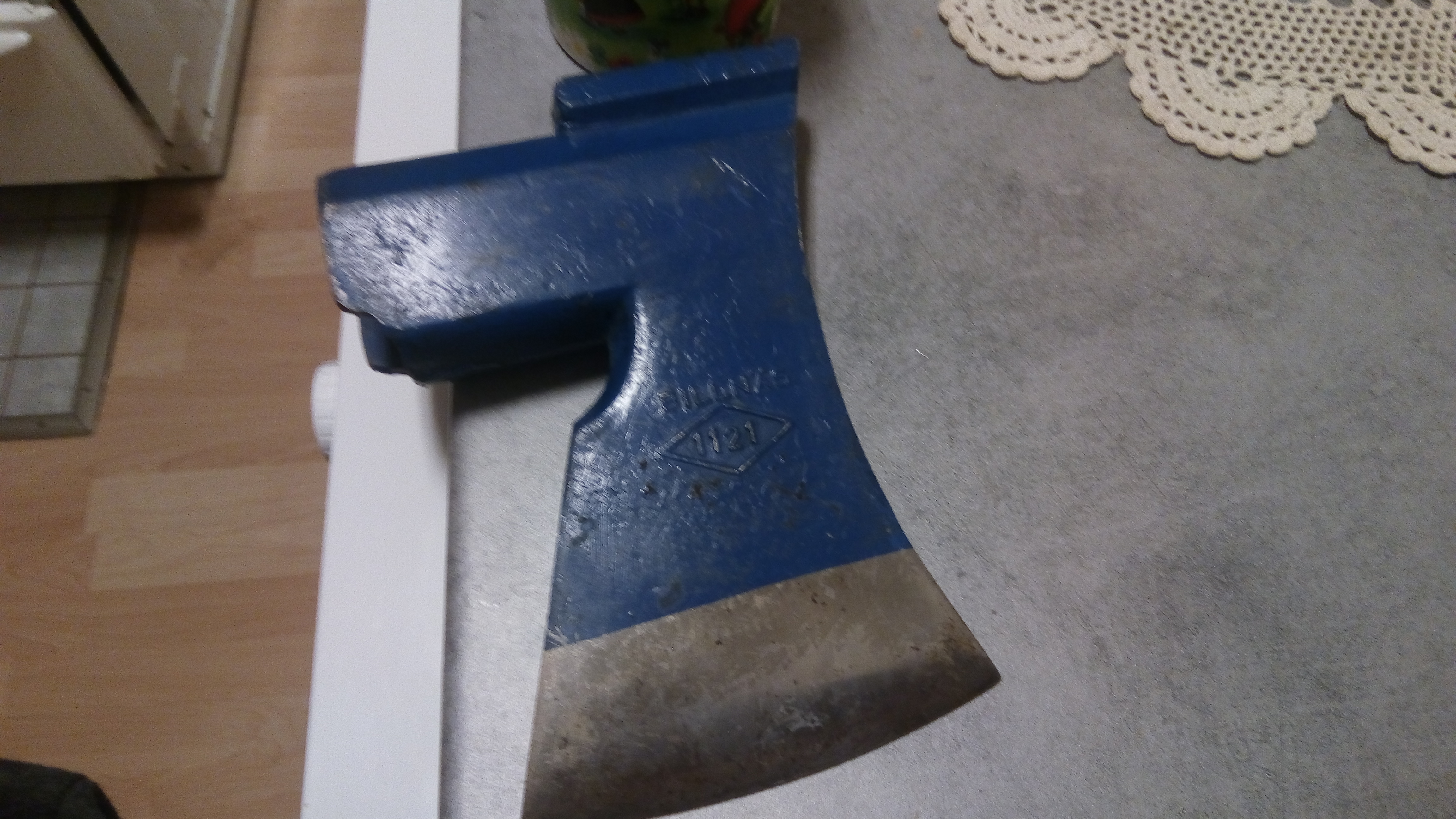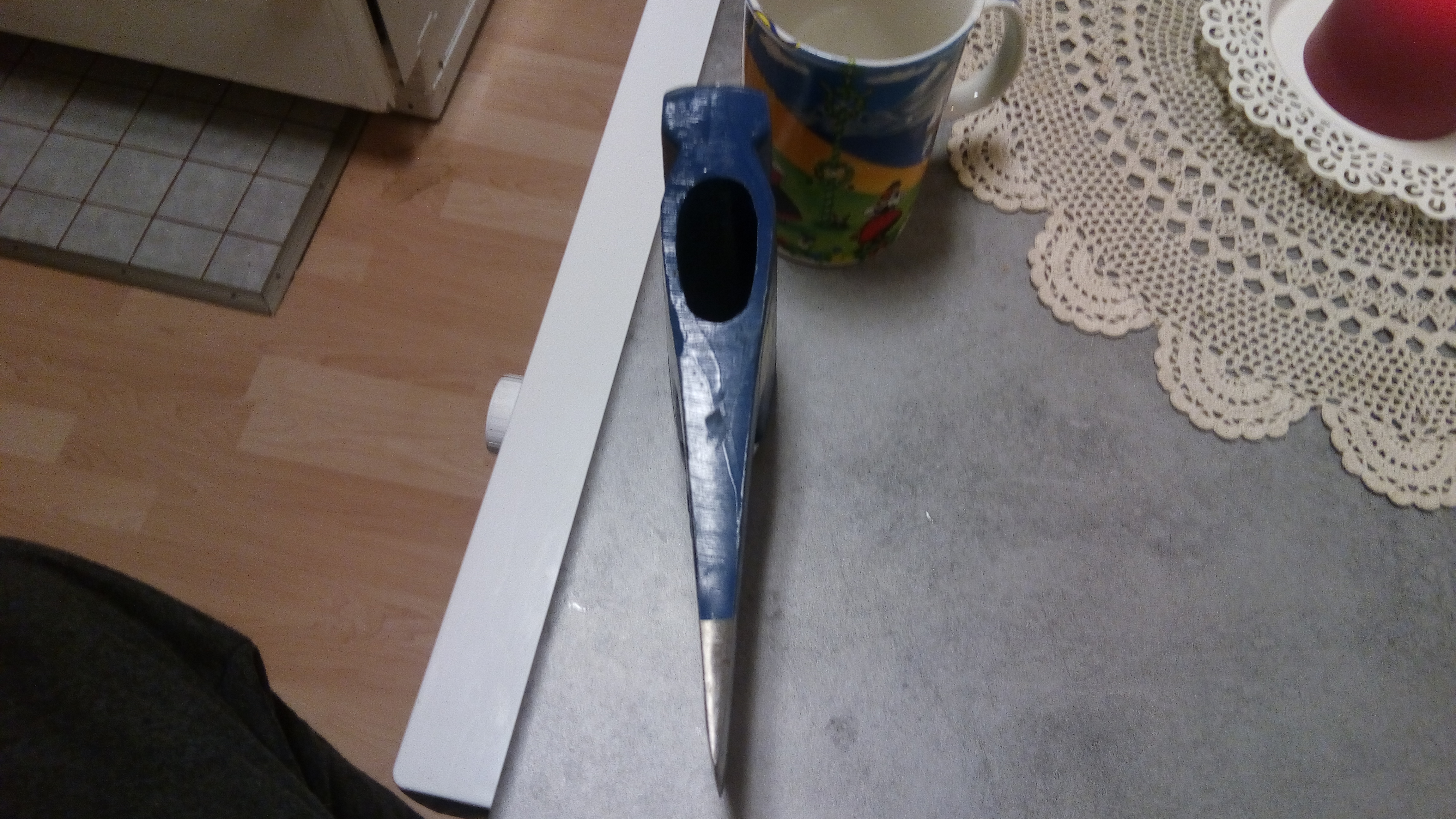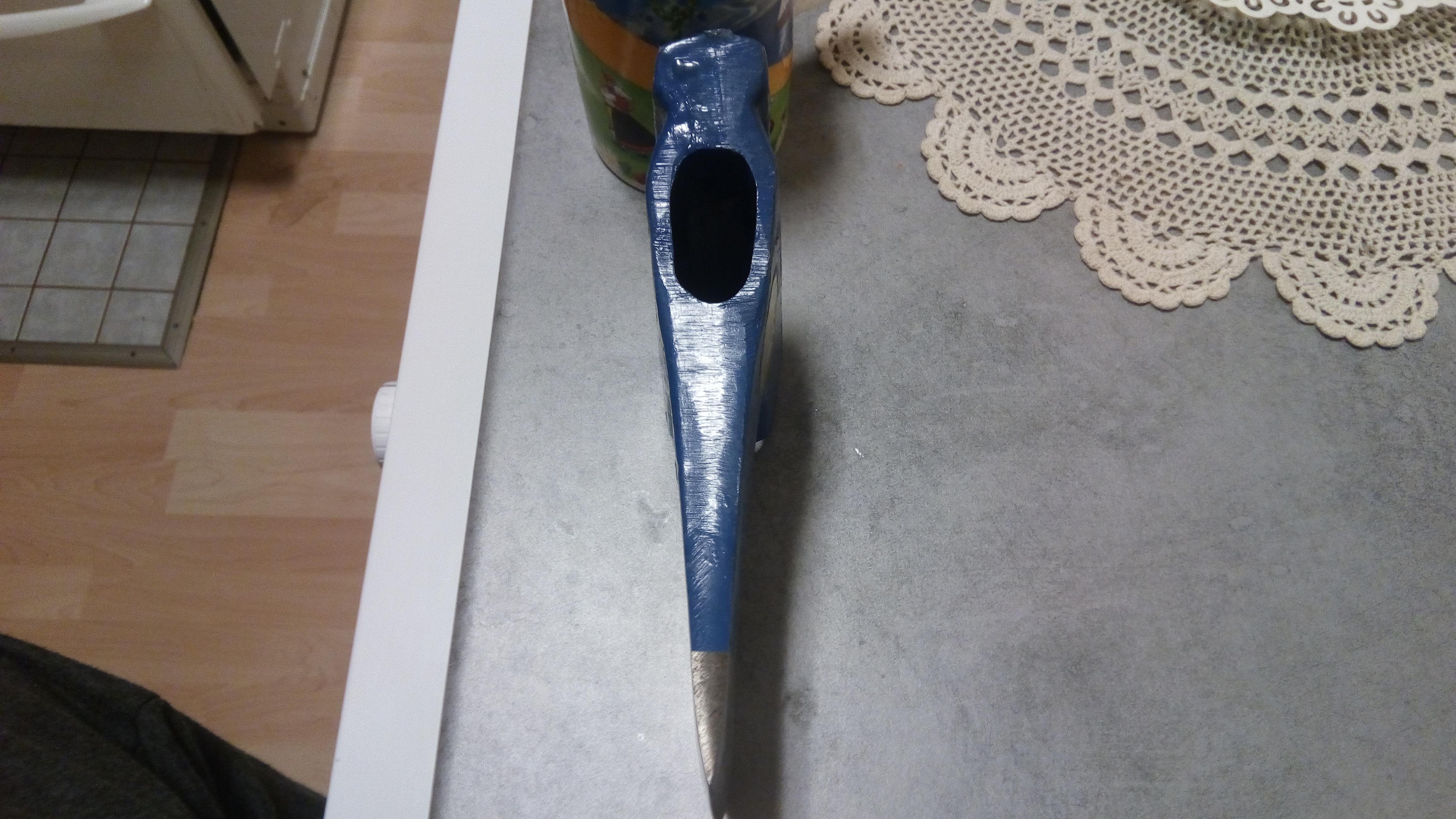-
The BladeForums.com 2024 Traditional Knife is available! Price is $250 ea (shipped within CONUS).
Order here: https://www.bladeforums.com/help/2024-traditional/
You are using an out of date browser. It may not display this or other websites correctly.
You should upgrade or use an alternative browser.
You should upgrade or use an alternative browser.
Finnish/Earlier Scandi axes - Kirves
- Thread starter Agent_H
- Start date
Ollie,thanks,really appreciate the detailed photos,especially the top views(that are so often left out,alas...).
According to Marcus's blog,these are the later models,prior to the whole Fiscars deal et c.,that Marcus refers to as "cast"....I've asked him on his blog,but haven't gotten an answer yet,maybe you would know:"Cast",meaning as in actually Cast,or Forged using so-called "Cast-steel"?
Thanks in advance(hope that it's not too obscure
According to Marcus's blog,these are the later models,prior to the whole Fiscars deal et c.,that Marcus refers to as "cast"....I've asked him on his blog,but haven't gotten an answer yet,maybe you would know:"Cast",meaning as in actually Cast,or Forged using so-called "Cast-steel"?
Thanks in advance(hope that it's not too obscure
They werent cast in any way. Only difference on how they were made previously was that Fiskars started using closed dies instead of open dies.
Im not sure if they started casting them after the early 70's when they swapped the design for the model 112* to the more modern one (as seen in the picture).

Im not sure if they started casting them after the early 70's when they swapped the design for the model 112* to the more modern one (as seen in the picture).

So i went to our familys summer cottage today and took pictures of the Billnäs made American felling axe. Its called the Ohio pattern by Billnäs but since im not quite familiar with American style axes i dont know if this was something invented by Billnäs or if there really is such thing as Ohio pattern axe.
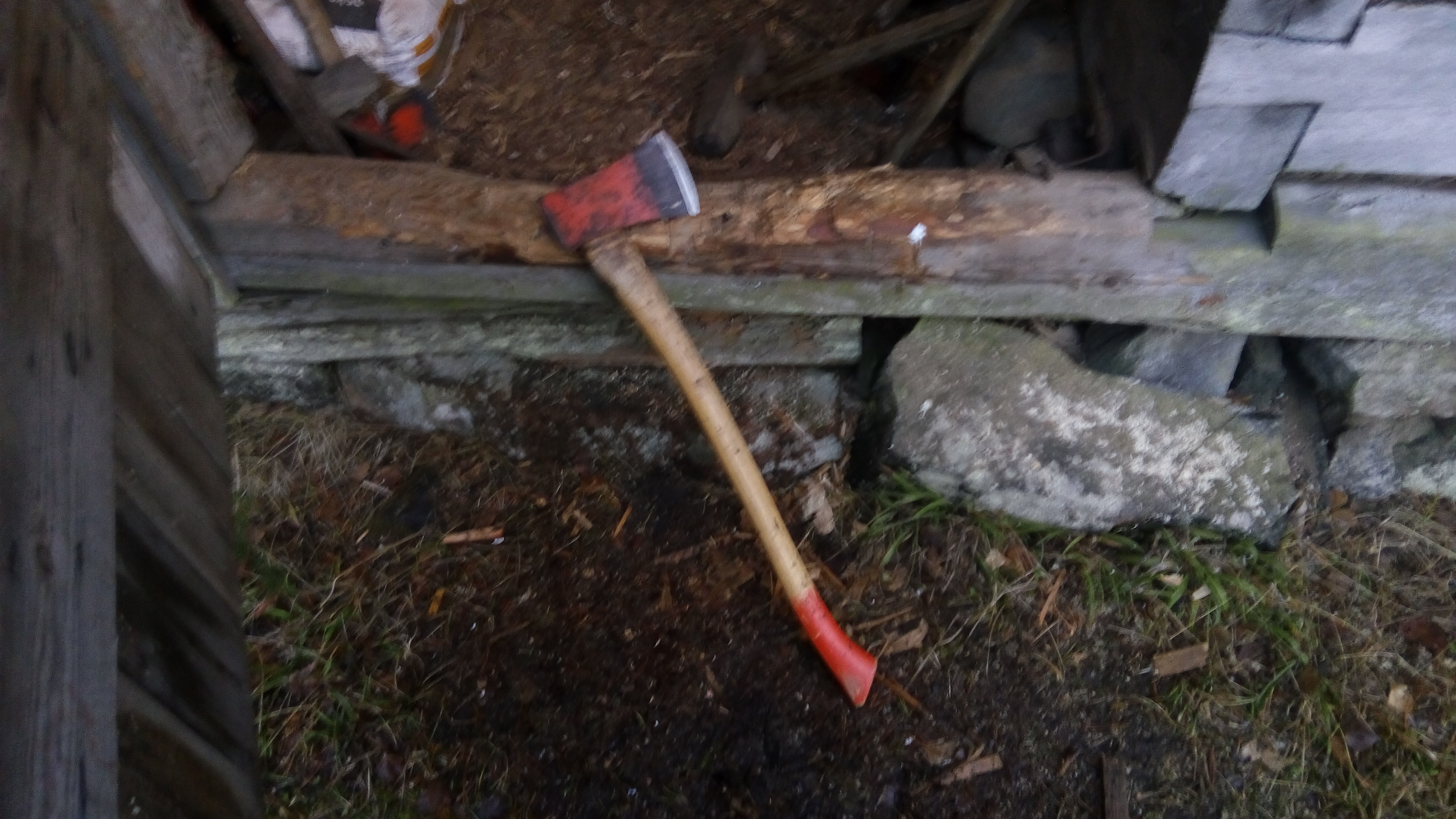

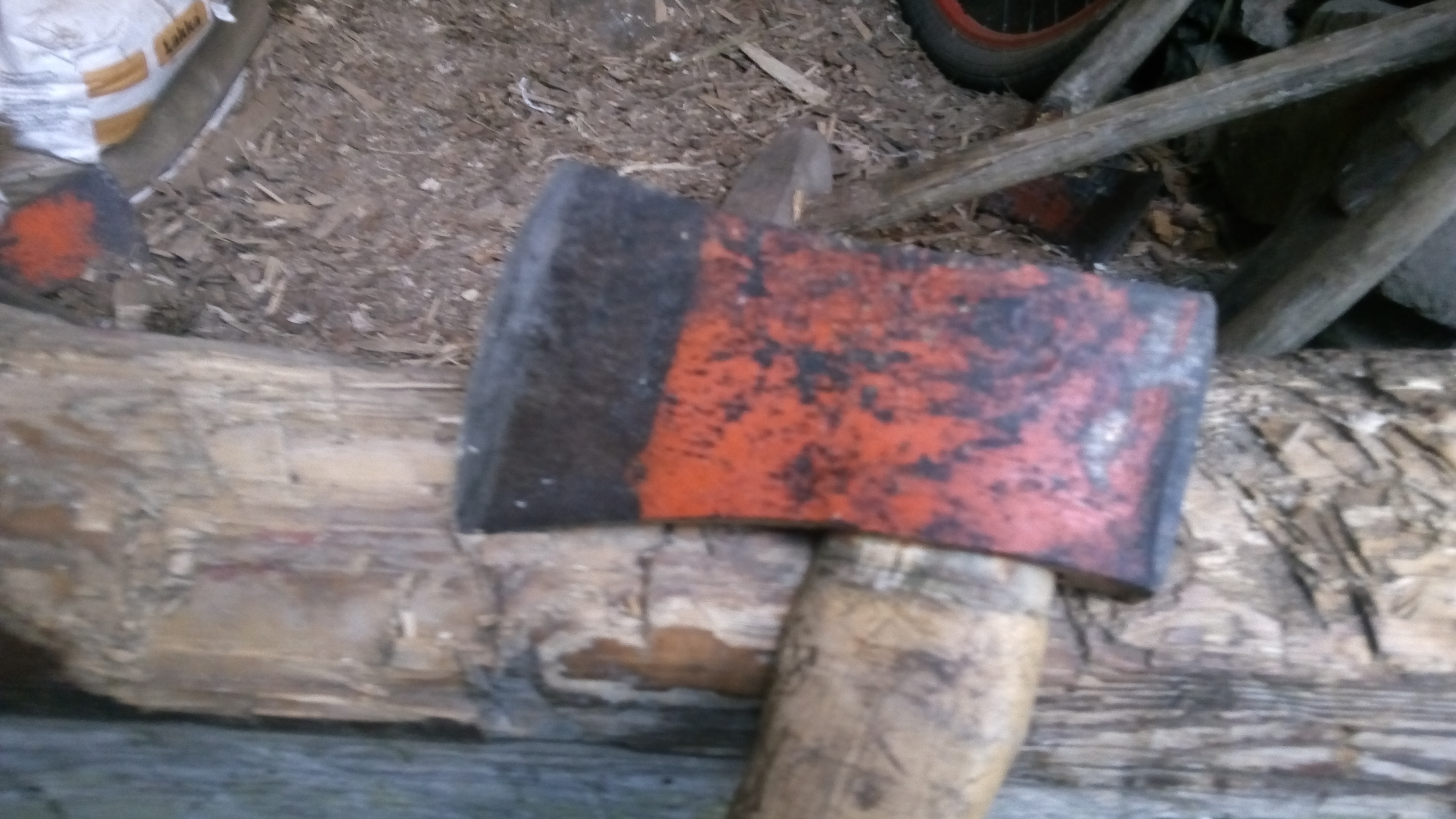
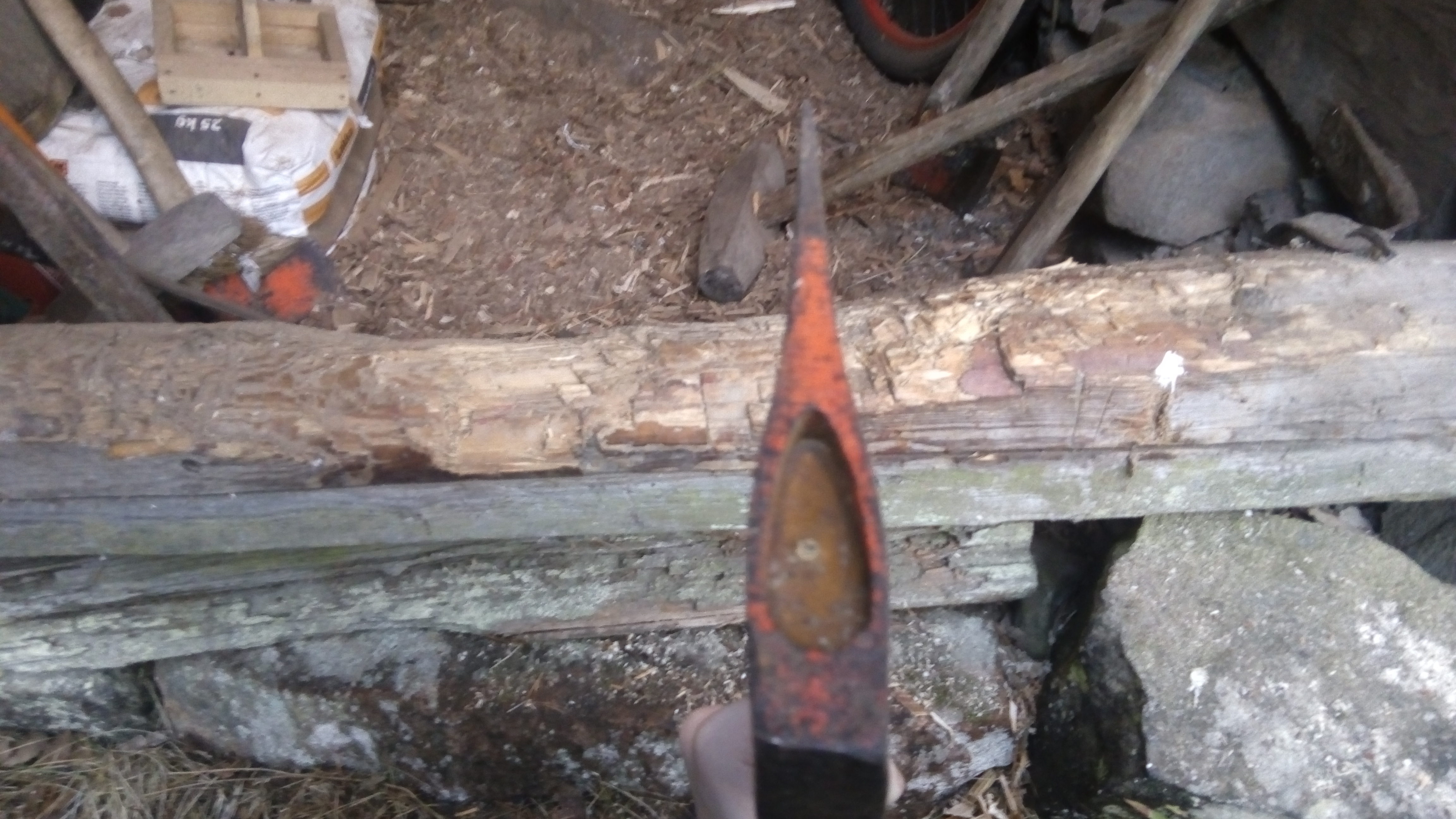




Square_peg
Gold Member
- Joined
- Feb 1, 2012
- Messages
- 13,850
There was an Ohio pattern axe. According to the book 'Woodsmanship' it was also sometimes called a Western Crown pattern.


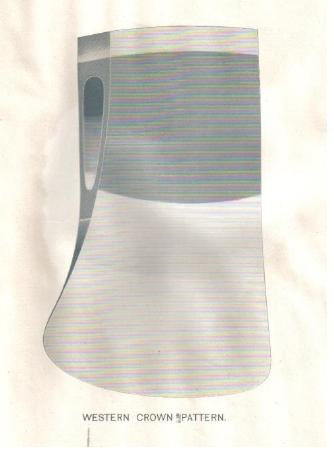
Some makers used 'Ohio' and 'Dayton' interchangeably.



Some makers used 'Ohio' and 'Dayton' interchangeably.
- Joined
- Aug 21, 2013
- Messages
- 3,898
Congratulations,Olli,on the upcoming 100th anniversary of Independence!
Centennial - you are right Jake!
By the way, Olli is a terrific character off the forums as well!
- Joined
- Mar 27, 2010
- Messages
- 4,993
Thanks,Ollie,beautiful axes!(thanks,Agent_H,for fixing those photos...(i presume you have?)...
I admire Martti Malinen tremendously....Not too long ago have come across his Karelian type....https://nordiskakniv...n-karelian-axe/....(had i another life to live i'd spend it travelling around Northern Europe,Finland in particular,blacksmith shops,begging for lessons...)
Hi Jake,
Had a brief encounter with Martti few years ago whom i bought 2 axes from; one carpenter axe and another hewing axe which is very close to the "Seinäpiilu".

Very knowledgeable smith, perhaps the best Axesmith in Finland.
Guess what, Mikhail Artemyev attended his class!
JayGoliath,thank you for posting this-simply outstanding,the Cool-factor through the roof!!!
It's the Methods alone,the knowledge to forge such Piilu in particular,that put the smith into a certain category where....Well.many more things become clear,and possible,and i envy Martti in a good way,but Very much!
M.Artemiev is yet another of my very favorite smiths,i'm not surprised that he found the time and resources to attend,a brilliant innovator,VERY skilled(And talented).
My hat's off to all my Finnish,Karelian,and other North-Western collegues!And once again-Happy Independence Day to all!!!!
It's the Methods alone,the knowledge to forge such Piilu in particular,that put the smith into a certain category where....Well.many more things become clear,and possible,and i envy Martti in a good way,but Very much!
M.Artemiev is yet another of my very favorite smiths,i'm not surprised that he found the time and resources to attend,a brilliant innovator,VERY skilled(And talented).
My hat's off to all my Finnish,Karelian,and other North-Western collegues!And once again-Happy Independence Day to all!!!!
- Joined
- Aug 21, 2013
- Messages
- 3,898
Jay, that is really cool experience! Ive read the nordiskaknivar blog primarily for the puuko porn but the work he does looks impressive even without knowing blacksmithing like some do.
I was ogling these two axes of his actually:
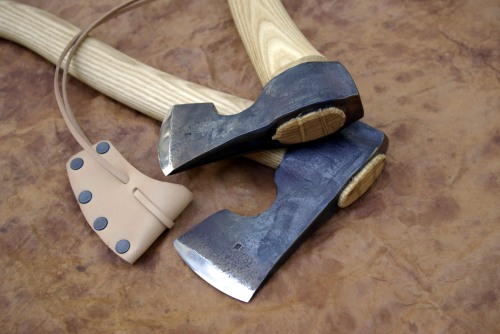
If you still have the axes, would you be willing to post a couple pictures? Id be interested to see them.
I'm finding that the Kemis are easier to sharpen on the handle rather than off. I think American patterns are easier to grip in a vise by the poll.
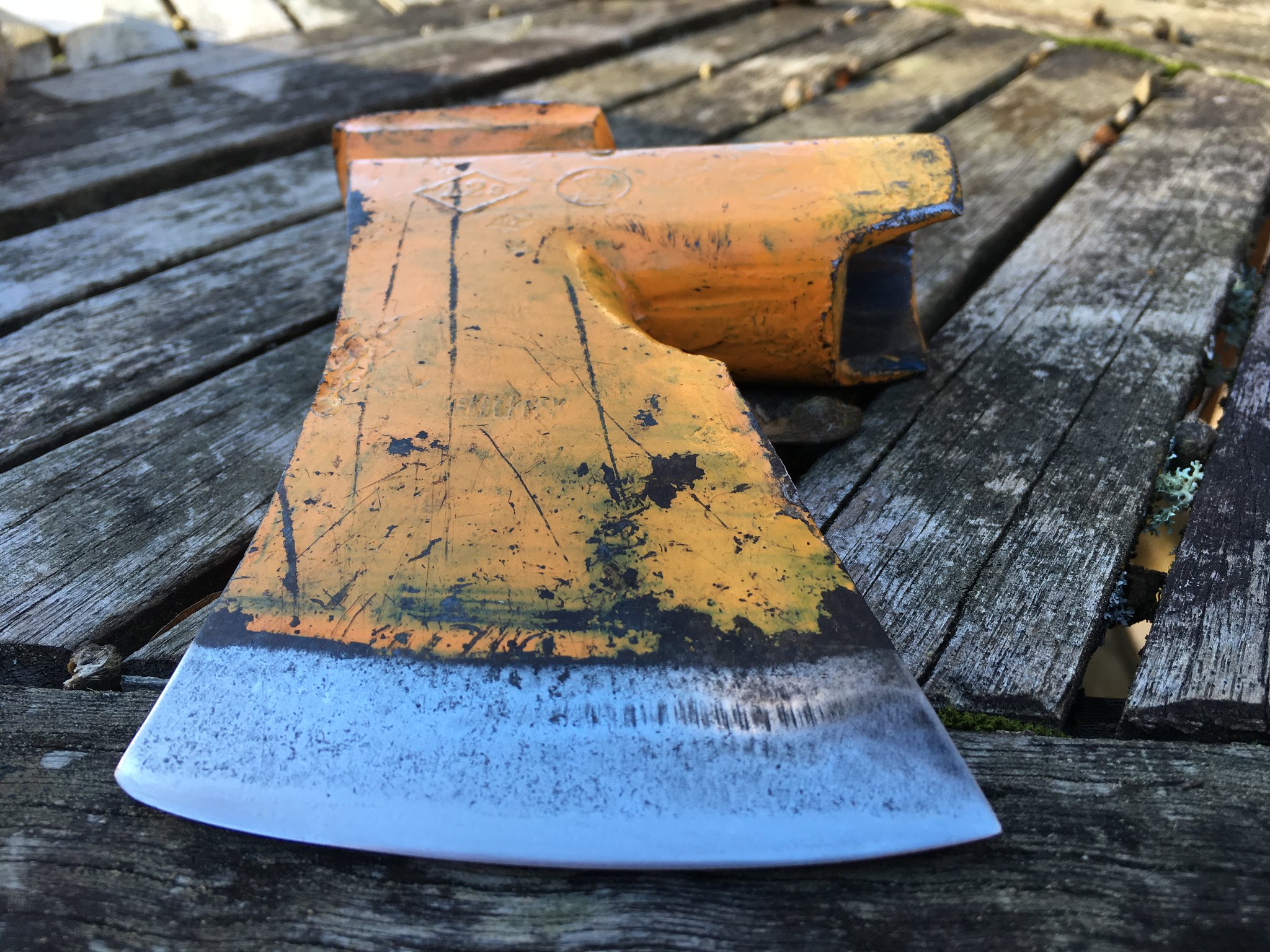
I was ogling these two axes of his actually:

If you still have the axes, would you be willing to post a couple pictures? Id be interested to see them.
I'm finding that the Kemis are easier to sharpen on the handle rather than off. I think American patterns are easier to grip in a vise by the poll.

Last edited:
- Joined
- Mar 27, 2010
- Messages
- 4,993
If you still have the axes, would you be willing to post a couple pictures? Id be interested to see them.
Sure, here you go-
The Carpenter axe (together with the Logbuilder, Bilnas and Kelloskoski):



The Logbuilder axes:
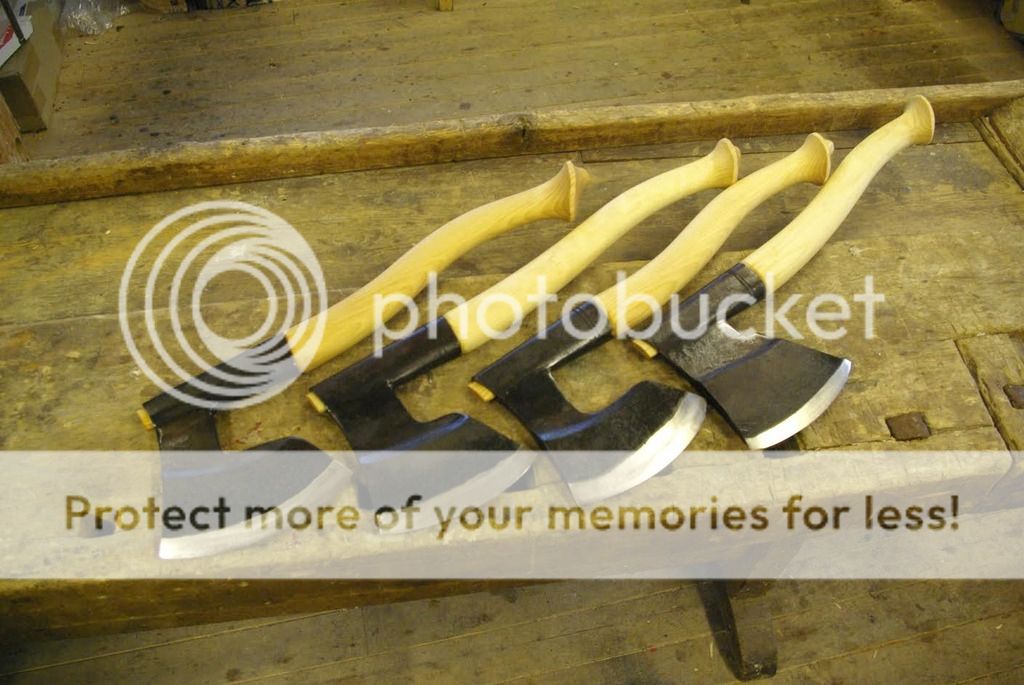
The head of the Carpenter model is made entirely out of Ovako ballbearing steel and the logbuilder is made from the mild steel, laminated with Ovako ballbearing ala Toporsib;
The sandwiched steel runs from the eye all the way to the edge.
Square_peg
Gold Member
- Joined
- Feb 1, 2012
- Messages
- 13,850
Those are fantastic, Jay.
We're always talking about 'fawn's foot' swells on axe handles and here I can see a whole new term being bandied about; 'shed swell' to describe the uncanny resemblance with the butt end of shed deer/elk/moose antlers.
Up above,Jay has mentioned Mikhail Artemiev,an appropriate addition to this thread:M.A. is a Karelian maker(a part of NW RF adjoining Finland),and not surprisingly carries on the local,regional traditions in design of tools.
A very gifted(and prolific)maker,he's "translated" the traditional Kirves construction methods(a complex laminate) into a solid mono-steel forging,(using the Russian analog of AISI 52100,high-Cr material for bearings,mostly).
Here's a good general overview of his work,including some landscapes of the area,the environment where these fantastic tools were born,so long ago...http://rusknife.com/topic/8769-михаил-артемьев/
A very gifted(and prolific)maker,he's "translated" the traditional Kirves construction methods(a complex laminate) into a solid mono-steel forging,(using the Russian analog of AISI 52100,high-Cr material for bearings,mostly).
Here's a good general overview of his work,including some landscapes of the area,the environment where these fantastic tools were born,so long ago...http://rusknife.com/topic/8769-михаил-артемьев/
Square_peg
Gold Member
- Joined
- Feb 1, 2012
- Messages
- 13,850
English translation of Jake's link.
https://translate.google.com/transl...%82%D0%B5%D0%BC%D1%8C%D0%B5%D0%B2/&edit-text=
https://translate.google.com/transl...%82%D0%B5%D0%BC%D1%8C%D0%B5%D0%B2/&edit-text=
- Joined
- Mar 27, 2010
- Messages
- 4,993
Far out,Jay,thanks for posting these....(the bottom photo is from Martti's class,or are these also yours?)
Hi Jake,
Only one of each.
M.M displayed that accordingly with the preferred head weight vs the diameter of the log hewn( as highlighted by the width of the transition from eye to edge). I hope you get my gists.
M.M also has elaborated the use of birch for handle instead of hickory or Elm. Read that somewhere else that selection of properly dried handle can affect the overall balance and performance of the axe hung.
Kindly correct me for that noobie claim?


